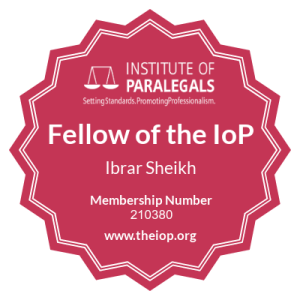A child arrangements order sets put with whom a child is to live with, spend time with or have contact with. This usually includes both parents and can include relatives such as grandparents. This order replaces contact and residence orders and brings arrangements together in to one order.
If you already have a contact or residence order from April 2014, you will be treated by the courts as having a Child Arrangements order.
A Child Arrangements order comes in 2 parts
• Part A – states whom a child is to live with, spend time with or have contact with. This will tell you which adult the child is to live with and which adult the child is to spend time with or have contact with. It is possible to have a “joint lives with” order where the parents are sharing residence of thier child.
• Part B – manages when a child is to live, spend time with or have contact with any other person. This part of the CAO will set out a schedule of when the child is living or spending time with each parent, and when indirect contact such as text, email, internet messaging, letters, ect. is to take place.
Child Arrangements Orders apply to both parents including the applicant. Both the applicant and the respondent must follow the order and respect the other parent. If one parent returns a child later than the agreed time after a contact period, that parent will risk being taken back to court with a application for enforcement of the CAO, simiarly if a parent does not make the child avaialbe for the contact period as set out in the order, they may also face the risk of an enforcement application from the other parent.
The details of the CAO will be written in to a ‘schedule of contact’ which the courts will call a ‘defined contract’. The schedule usually has details of when and where the child to to be collected and by who, how long the child is to stay, when and where the child is to be returned and by who. The CAO has to be written in clear terms so that both parties can understand how to comply and will be aware if they breach the order.
The application is made on form C100 but you can only apply after the applicant has attended a MIAM (mediation information and assessment meeting), unless the applicant is exempt or the application is urgent and is to be made without notice. The mediator will complete section 14 of the form to confirm the applicant attended the MIAM. If the respondent will not go to mediation or the case is unsuitable for mediation the mediator will write this on the form and sign it. There usually a low fee for this service.
The court must give the applicant –
• A copy of form C100
• Supplement information from C1A (if there is welfare concerns)
• The notice of hearing
• The acknowledgment form C7
• A blank C1A form
• The certificate of from C9
• Information leflets for the parties (including the CB7 leaflets)
The completed C100 application should be posted to the designated family centre, which is usually the one which is nearest the child, and there is a fee of £215.
Under the terms of the child arrangements programme the courts are expected to list the first hearing dispute resolution appointment (FHDRA) within 5 weeks of receipt of the application, or 6 weeks at the latest. If that is not possible a timetable must be drawn up between CAFCASS and the court service.
Orders made under section 8 on The Children Act 1989 only apply to issues of parental responsibility and cannot be applied to issues that only concern the adults in the case.
The original section 8 orders are –
• Prohibited Steps Orders
• Specific Issue Orders
• Contact Orders
• Residence Orders
Once a child is 18 years old, any order made under section 8 is no longer in effect. The court will usually not make new orders, apart from one to discharge an order.
Section 10 of The Children Act 1989 decides who can apply for a section 8 order. Parents, guardians and parental responsibility can apply for an order. Mothers and married fathers have parental responsibility as of right. Unmarried fathers without automatic Parental Responsibility, step-parents etc. can receive responsibility under the right conditions.



